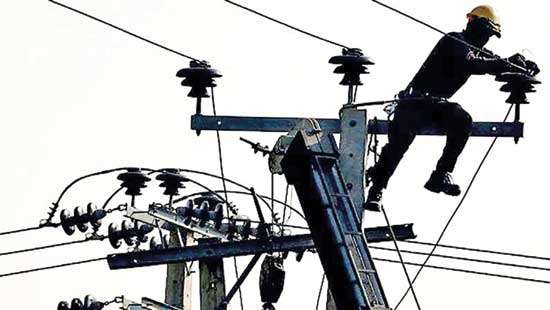Reply To:
Name - Reply Comment


Despite the sharp upward revisions in electricity tariffs, the financial performance of the Ceylon Electricity Board (CEB) remains dismal, the March quarter interim financial accounts of the State-run utility showed.
The electricity tariffs were hiked in August last year by an average of 75 percent and again in February this year by 65 percent to reflect the cost incurred by the utility in generating and distributing electricity to its customers.
However, despite these sharp increases, the power utility incurred massive losses at the top line level and even deeper losses at the bottom-line.
As per the interim financial accounts for the three months ended March 31, 2023, at Group level, CEB saw its revenue surging 71.1 percent year-on-year (YoY) to Rs.135.8 billion while the cost of sales rose 46.4 percent YoY to Rs.152.9 billion. This resulted in a gross loss of Rs.17 billion, which is a decrease of 31 percent YoY. At the Board level the gross loss narrowed by 31.5 percent YoY to Rs.20.8 billion.
However, as a result of sharp rise in other and administrative expenses, the operating loss of the CEB at the Group level widened to Rs.19.2 billion, up 12.1 percent YoY.
At the Board level, the operating loss narrowed 35.1 percent YoY to Rs.19.3 billion.
The massive jump in net finance cost to Rs.16.3 billion from Rs.3.7 billion a year ago, completely erased whatever the gains made at the top line, and as a result, CEB at the Group level recorded a net loss of Rs.35.5 billion in the March 2023 quarter compared to Rs.21.5 billion a year ago.
However, at the Board level, the net losses rose 4.2 percent YoY to Rs.34.3 billion. Meanwhile, CEB’s retained losses were recorded at Rs.546.5 billion as at March 31, 2023 compared to Rs.525.4 billion as at December 31, 2022.
During a recent press briefing, Janaka Ratnayake, the under-fire Chairman of the PUCSL, the country’s energy sector regulator, told media that the government might go for another round of tariff hike in light of CEB’s revenue falling below the target levels as a result of decline in consumption.
He pointed out that due to declining petroleum and coal prices in the world market, instead of another hike, CEB should at least reduce electricity prices by 25 percent.
Power and Energy Minister Kanchana Wijesekera this week said the CEB submitted its proposal to the PUCSL to revise electricity tariffs on July 1 according to the government’s policy decision and tariff filing requirement to adjust the tariffs on January 1 and July 1.
Meanwhile, during a press briefing on Monday, the International Monetary Fund (IMF) Resident Representative in Sri Lanka, Sarwat Jahan confirmed that the cost recovery measures on both electricity and fuel pricing are expected to be continued throughout the four-year IMF programme.